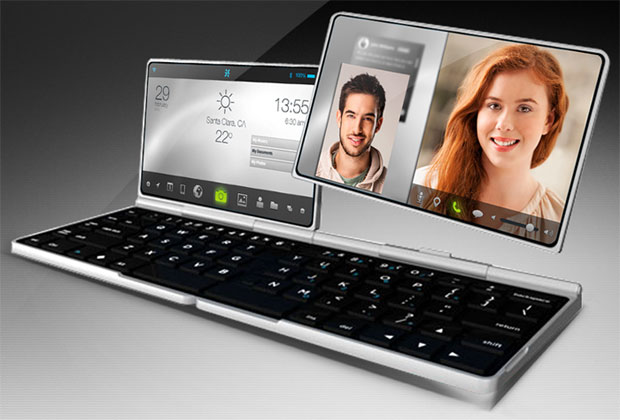
Back in 2011, in the dark, pre-tablet days of the netbook, Motorola introduced a phone and laptop combo called the “Atrix.” The then-powerful 4G, dual-core AT&T phone slotted into a unique receptacle on the back of the optional laptop’s clamshell hinge — a bit like a game cartridge slides into a console. The phone then powered the Chromebook-like, highly stripped-down laptop.

Let’s put it this way: Despite intriguing phone-heads of the day and garnering prominent in-store displays at RadioShack, the device didn’t take the world by storm.
The permutation was perceived as expensive: At launch, it sold for US$500, including phone, and you had to buy a $20-per-month tethering plan from AT&T to get that price. Plus, like much hardware of the time, it was a bit clunky, it was underpowered, and — other than placing Android on a large-ish screen — it didn’t do anything more than the kit we already had. It was kind of pointless.
However, like today’s Chromebook fan base, there was a small, mobile, keyboard-requiring user group who swore by them.
Fast forward to 2013, and IdealFuture thinks it’s building the next must-have mobile device permutation. It says it has the mobile future of computing in the first “superphone, hypertablet and dual-display laptop,” to quote its own hyperbole.
What Is It?
If funded, the IF Convertible range of laptops will provide a laptop/phone/tablet combo with dual 7-inch screens. It’s almost a mobile-desk concept, rather than a classic laptop, or phone/tablet combo like the current Asus PadFone — which resembles Atrix, with its slot-in phone.
The left screen is always attached to the device; the phablet-sized phone, which IdealFuture calls a Slingshot, is attached to the right-side of the laptop, creating dual displays.
The operating system is Windows when the Slingshot is docked, but dual Android and Windows when the Slingshot is removed — the Slingshot being Android-driven.
Tagline: “Think of it as the Swiss Army knife of computing devices.”
Technical Details
The IF Convertible will weigh in at less than one pound and feature an 18-hour battery; ports consist of USB, HDMI, Ethernet and memory card; RAM comes in at 4 GB and storage at 512 GB. Radios include LTE and WiFi.
The Numbers
As of this writing, IdealFuture has nine funders for the IF Convertible contributing $4,009 of a $100,000 goal. The funding period ends on Dec. 4, 2013.
A contribution of $799 gets you an IF Convertible Alpha in silver with engraving and a T-shirt; a $1,499 contribution gets you the Elite package, which includes premium finish, including gold, engraving, special metal-flake covers and a leather carrying case.
The estimated shipping date is July 2014.
The Upsides
It’s a compelling idea to have phone and laptop combined in one. Primarily, we think, because, unlike with Atrix, it should mean that the user shouldn’t have to buy into the crazy wireless carrier tethering and data device nickel-and-diming common in many markets.
It’s one device, according to the creator, so it requires just one data plan — not two or three spread out among tablet, laptop and phone.
Plus, there is evidence that dual-displays do improve productivity.
The Downsides
We’re seeing a slightly slower uptake in funding for this project compared with some of the other successful campaigns we’ve watched.
Even though this campaign will receive all funds raised when it’s done, as is customary in Indiegogo flexible funding projects, the creator needs to get with it on the fundraising in order to make the required funding threshold — and that doesn’t just mean social networking and T-shirts.
We need to see some component specifications — currently nonexistent — as well as some more concrete plans relating to engineering like screen sourcing, manufacturing promised to be in the U.S., distribution and even prototyping plans — which also don’t appear to exist.





















































